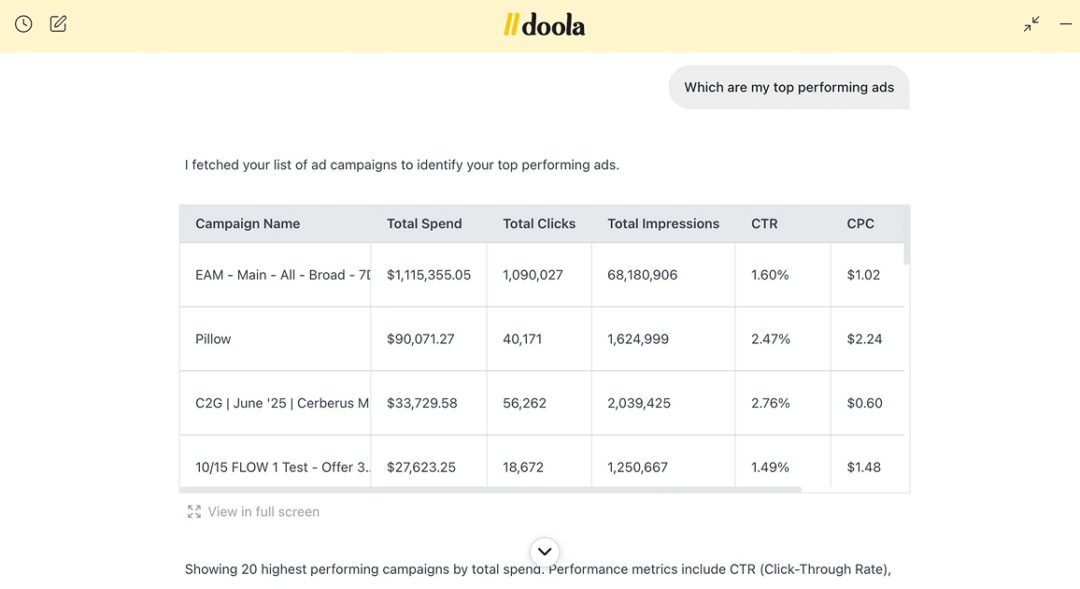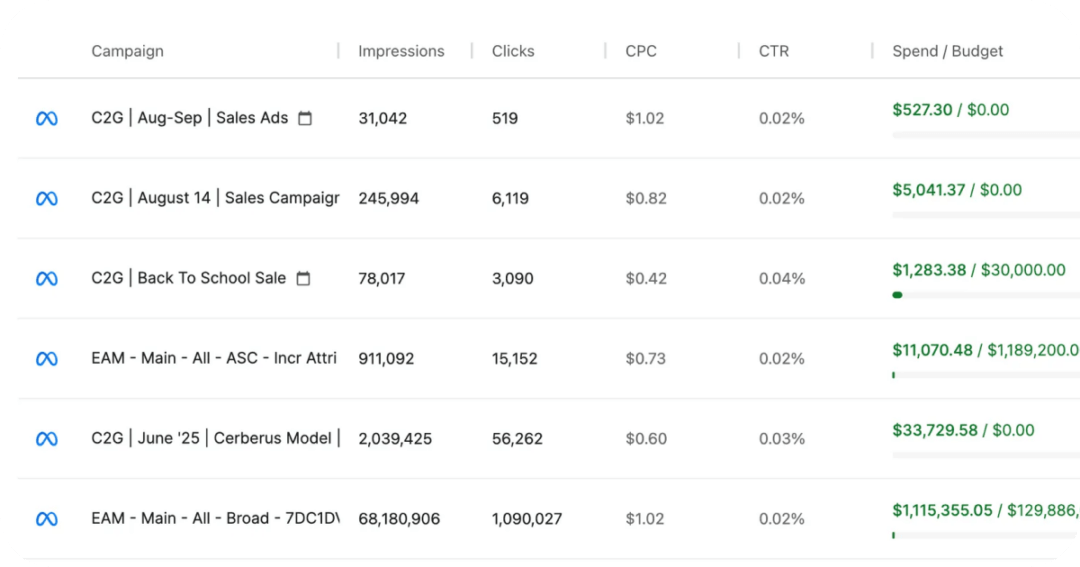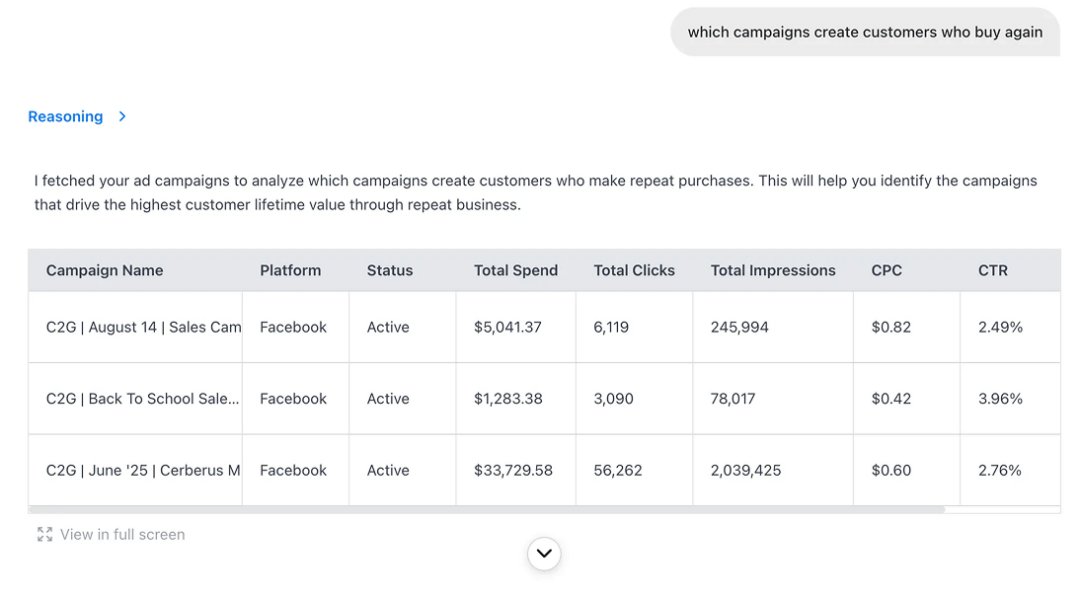Discover the profit-first strategy for Black Friday 2025 e-commerce ads. Learn how to control ad costs, improve ROAS, and turn one-time buyers into loyal repeat customers.

Every year, Black Friday ads generate record-breaking traffic, but they do not always translate into record-breaking profits.
CPCs can rise by 30-35% and CPMs can surge by 25-66% during the holiday shopping season. At the same time, higher shipping fees, deeper discounts, and rising return costs mean that even your best-performing campaigns can quietly erode profit.
For e-commerce founders, that creates a clear choice:
Spend aggressively to win attention, or spend strategically to win profit.
Leading brands are rethinking their approach to Black Friday 2025 e-commerce ads, focusing on protecting margins, building lifetime value, and turning every ad into a long-term growth engine.
This guide outlines 7 proven rules that top e-commerce operators follow to make their Black Friday campaigns profitable.
Plus, when your operations are connected through doola, you get a unified dashboard to monitor ad spend, COGs, profit margin, and more. It clearly shows what’s working, what’s wasting budget, and what’s driving real profit.
The Ad Challenge: Why Black Friday Ads Are Harder to Profit From Than Ever
The pressure to grow during Black Friday is enormous, yet the path to profit is narrower than most brands expect.
Even strong brands with healthy traffic and solid offers can struggle to see real margin gains during peak season.
Here’s what’s changed beneath the surface of Black Friday ad performance:
Ad Spend Is Growing Faster Than Returns
As more brands compete for the same audiences, cost per click (CPC) and cost per acquisition (CPA) continue to rise across Google, Meta, and TikTok.
According to recent data, e-commerce ad costs range from $0.29 to $3.00 per click, depending on targeting and platform.That means even small inefficiencies in structure, audience, or bidding can turn a great campaign into a costly experiment.
Deep Discounts Erode Contribution Margins
Black Friday discounts may drive volume, but they rarely drive profit.
When reduced prices collide with higher shipping costs, fulfillment fees, payment charges, and product returns, contribution margins fall faster than expected.
The more aggressively a brand discounts to compete, the harder it becomes to recover those lost dollars later in the funnel.
Mobile Dominates, but Conversion Gaps Persist
Adobe found that approximately 57% of sales on Cyber Monday were made through mobile devices, accounting for $7.6 billion in spend (up 13.3% YoY). That means a single slow checkout can destroy your paid traffic efficiency in seconds.
The Sales Window Has Expanded While Attention Has Shortened
Shoppers begin browsing weeks in advance, comparing offers across channels, and making purchasing decisions when timing feels right.
Brands that treat Black Friday as a short-term campaign instead of a multi-phase journey often pay higher CPMs to catch audiences too late, when costs have already peaked.
Acquisition Without Retention Leads to Short-Term Wins
Nearly 59% of holiday orders in 2024 came from first-time buyers. Without post-purchase flows or retention systems, those customers vanish, and your acquisition cost becomes a one-time expense instead of an investment in lifetime value.
Sales spikes are exciting, but if profit per order continues to decline, your growth engine is quietly burning out.
The brands that will lead in 2025 are those that treat every ad dollar as capital, measure it, optimize it, and tie it directly to return.
👉 Up Next: 7 Rules That Turn Black Friday 2025 E-Commerce Ad Performance Into Black Friday Profit.
Rule #1: Set Profit-First Metrics Before You Launch Any Ad

Before you spend a single dollar this Black Friday, decide what real profit looks like.
Too many e-commerce brands celebrate revenue spikes that hide shrinking margins. A $100 order means nothing if $90 is spent on advertising, shipping, and discounts.
Think like a CFO before you think like a marketer:
Calculate Your True Margin per Order
Use this formula: Sale Price – Cost of Goods – Shipping / Returns – Estimated Ad Cost = Real Margin per Order.
Example: Sale $99 – Cost $39 – Shipping $10 – Ad $20 = $30 profit per order.
Set a Profit on Ad Spend (POAS) Target
For every $1 spent on ads, aim for $4 in profit, not just $4 in revenue. This metric tells you whether your Black Friday e-commerce ad strategy is truly scalable.
Define Clear Action Thresholds
✔️ If your POAS dips below target, pause or optimize the campaign
✔️ If your AOV (Average Order Value) declines, introduce a bundle
✔️ If the repeat-buyer rate weakens, divert part of your spend to retention flows
Track Real-Time Profitability
With doola, connect your business accounts to view live ad margins. Use doola’s AI Co-Founder to ask questions like “What’s my current POAS on Meta?” and get instant data-driven answers.
When profit becomes your north-star metric, you stop chasing numbers and start scaling systems that compound returns.
🔖 Related Read: Black Friday 2025 E-Commerce: Predict Best Sellers & Maximize Profit with AI
Rule #2: Focus on High-Margin Products and Smart Offers, Not Just Deep Discounts

Discounting everything may fill carts, but it empties profits.
The most profitable e-commerce brands for Black Friday 2025 won’t compete on who cuts prices deeper, but on who builds smarter value.
Here’s how to engineer offers that protect margin while boosting perceived value:
- Start with a margin audit: Sort SKUs into high, medium, and low-margin tiers. Limit discounts on low-margin items and spotlight products that can absorb ad spend yet stay profitable.
- Build bundles that increase order value: Instead of price cuts, pair complementary items. Example: “Buy Product A + Accessory B for $149.”If the total cost is $70 and the ad cost is $25, you still maintain a $ 45 profit per order, while buyers perceive extra value.
- Use tiered incentives to lift AOV: “Spend $300 → 20% off” or “Spend $500 → 30% off.” This encourages customers to increase their cart size, which spreads your fixed acquisition and shipping costs over a larger revenue base.
- Lead with value, not markdowns: Replace “Save 30 %” with “Get more for what you spend.” It keeps your brand aspirational while still driving conversions.
- Monitor profit live: Within doola Analytics, track margin by SKU and campaign. Scale the offers that meet your POAS target and pause those that don’t.
🔖 Related Read: Best Sales Analytics Software for E-Commerce: Top Picks + How to Choose the Right Tool
Rule #3: Build Real-Time Ad Agility to Protect Profit
Most brands don’t lose profit because their ads are bad; they lose it because they react too late.
During Black Friday, ad costs and buyer behavior shift by the hour. A campaign that’s profitable at noon can quietly bleed margin by evening if you’re not watching in real time.
The best-performing brands in 2025 are building real-time agility into their ad operations, where every metric update triggers a business decision.
Here’s how to stay agile and protect your profit curve:
- Track key metrics hourly, not weekly: Watch CPC, conversion rate, and POAS side by side. A $0.50 CPC increase may seem small, but it can wipe out profit on thin-margin products in just a few hours.
- Use dynamic budget reallocation: Move ad dollars as results change. If your Google Shopping campaign drops below target POAS, shift spend to Meta retargeting until it stabilizes. Treat budgets like liquid assets, not locked allocations.
- Test creatives in micro-cycles: A creative with just 1.2 times higher CTR can slash your cost per acquisition. Rotate creatives daily instead of weekly. Keep your winners in play only as long as their performance holds.
- Deploy flash offers with intent: If a strong SKU slows, run a 12-hour targeted offer for that segment only. Don’t discount your entire store. Micro-promotions maintain high urgency without compromising overall margins.
Rule #4: Prioritise Audiences and Channels That Deliver Profit (and Watch Them Live in doola)
Most brands waste half their Black Friday budget on audiences that never convert. The smartest ones double down where the data already proves profit.
Your best returns rarely come from reach; they come from relevance. That means investing in the audiences and channels that consistently deliver margin, not just clicks.
Here’s how to make every ad dollar count:
- Segment by profit potential, not vanity metrics: Group your audiences into VIP repeat buyers, past purchasers, warm visitors, and cold traffic.Cold audiences build awareness, but warm ones build your bank account.
- Allocate spend like an investor: Think in terms of return per audience.If a retargeting list gives you $6 in profit for every $1 spent, that’s where your money should flow, not into broad ads that barely break even.
- Retarget with creativity: Your warm audience already trusts you. Use that to sell more intelligently: exclusive bundles, early access, or “only for you” upgrades.Keep broad prospecting minimal until your profit channels are maxed.
- Review performance hourly during peak days: If CPCs spike or CTRs drop, react while the data is still fresh. Reallocating spend mid-flight, waiting until tomorrow, is what deducts profit.
- Track the real winners in real-time: Inside your doola dashboard, connect ad spend and order data to see direct performance lines like: “$33,729 spent → $89,000 revenue → $24,000 profit.” The moment a campaign drops below your target margin, you’ll know and can shift that spend immediately.

📌 Pro Tip: Treat ad spend like a portfolio. Put most capital into the assets (audiences + channels) that return profit and use doola to reweight allocations in real time.
Rule #5: Your Backend Makes or Breaks Your Ad Profit
Every click you pay for is a test of how strong your operations really are. If your website slows down, your checkout breaks, or your order fulfillment lags, your profit slips away before the order ships.
During Black Friday, even a small operational gap can cost thousands in wasted ad spend.
Here’s how to turn operations into a competitive advantage:
✔️ Run a Full Stress Test Before Launch
Simulate traffic peaks across both mobile and desktop devices. Fix slow pages, broken links, and checkout delays.
According to Google, even a one-second delay in mobile load time can result in a 20 percent drop in conversions.
✔️ Calculate Total Cost per Order
Add up every hidden cost: product cost, ad spend, shipping, packaging, returns, and labor. The number that truly matters is what is left after all these deductions. That is your real profit per order.
✔️ Align Marketing and Fulfilment
Make sure fulfilment knows the campaign calendar and projected order volume. When your operations team is prepared for spikes, you avoid delivery delays, refund requests, and unnecessary costs.
Rule #6: Turn Black Friday Buyers into Year-Round Customers

Black Friday attracts deal-hunters, not loyalists. Your job is to turn that first impulsive purchase into an ongoing relationship that keeps generating profit long after the sale ends.
Here’s how to turn short-term excitement into long-term value:
- Tag and nurture instantly: The moment a customer buys, tag them in your CRM and trigger a welcome sequence. Send helpful tips, use-case ideas, and personalized recommendations that build trust and familiarity beyond the discount.
- Offer time-bound incentives: Motivate a second purchase within 30 days. A thank-you credit or limited-time offer such as “10 percent off your next order” encourages quick repurchase and habit formation.
- Create retention-based content: Share authentic stories, tutorials, or customer features that show how your product improves real lives. When customers feel connected to your brand story, they stay even when the discounts disappear.
- Measure lifetime ROI: Use doola to see the acquisition cost with repeat-order data so you can see which campaigns create customers who buy again. A single view of campaign spend, repeat margin, and retention rate reveals your real return on ad investment.
Retention converts ad spend into equity. Every repeat order builds upon your earlier marketing efforts and reduces future acquisition costs. The brands that nurture customers after the sale build profit that lasts all year.
Rule #7: Monitor, Pivot, and Record Every Move

Black Friday is not a campaign you launch and leave. It is a dynamic, ever-changing environment where prices, behavior, and performance fluctuate constantly.
The brands that win are those that monitor, adjust, and learn more quickly than the rest.
Operate like an investor who tracks every move:
- Set up a real-time performance hub: Track CPC, conversion rate, AOV, and POAS as they happen. Waiting for daily reports is how you overspend without realizing it.
- Create clear guardrails: Decide in advance what triggers a change. For example, if POAS falls below 2.5 or your conversion rate dips under 3 percent, reallocate the budget immediately. Treat thresholds as rules, not suggestions.
- Document every pivot: Every adjustment you make today becomes next year’s insight. Record what worked, what failed, and what shifted your metrics. Over time, this becomes a playbook for consistent growth.
- Leverage AI as your live analyst: doola’s Ask AI assistant lets you query your campaign data instantly. Ask, “Which campaign is losing margin right now?” or “Where is my highest profit by channel?” and get correct answers within seconds.
Remember, data doesn’t build profit unless you act on it in real time. Treat every optimization like a trade, an informed decision that compounds future performance.
Bonus Section: The 3 Levers of Scalable Profitability
Every high-performing ecommerce brand relies on three levers that decide how profit scales. When these levers move together, they compound returns. When one fails, ROI collapses.
This is the framework that separates reactive marketers from strategic operators.
1. Visibility
You cannot improve what you cannot see. Profit visibility determines whether you optimize in time or react too late.
✔️ Utilize analytics and finance dashboards that display live profit per campaign, rather than just ROAS.
✔️ Track indicators such as cost spikes, falling AOV, or rising return rates before they erode your margin.
✔️ Focus on metrics that directly tie to cash flow, rather than just ad impressions or engagement.
Brands with clear visibility spot margin leaks early and redirect spend, while others are still guessing.
2. Velocity
Speed is profitability. Every campaign loses power when decisions take too long.
✔️ Review performance multiple times a day during the sales window.
✔️ Empower your team to adjust targeting or budgets instantly without waiting for sign-offs.
✔️ Keep daily standups short and focused only on what impacts ROI within the next 24 hours.
Fast reactions preserve margin because you correct inefficiencies before they multiply.
🔖 Related Read: Sales Analytics: How to Track, Analyze, and Act on Your Sales Data
3. Validation
Profit does not come from doing more. It comes from scaling what works and cutting what does not.
✔️ Evaluate not just total performance but profit by SKU, campaign, and audience.
✔️ Reinvest the majority of your ad spend into validated, high-margin campaigns before testing new ideas.
✔️ Establish a review rhythm to ensure every dollar is directed toward proven profit, not assumptions.
And with doola, you can manage these three levers within one system. By connecting financial data, you gain complete visibility into what drives profit and what silently drains it.
Turn Your Black Friday 2025 E-Commerce Ads into Record-Breaking Profit

Is your e-commerce brand ready for the biggest retail season of the year?
Refine your ad strategy, strengthen your backend operations, and make every campaign measurable and effective. The key to winning this Black Friday lies in clarity, knowing exactly how your ad spend connects to real profit.
With doola AI Co-Founder, you can get answers to ad performance, product margins, and cash flow all in one place. It provides you with the insights needed to adjust campaigns instantly, optimize spending, and make profit-focused decisions.
The playbook is here. The data is clear. The only question that remains:
Is your brand ready to scale smarter this Black Friday?
Sign up with doola to start today!
FAQs

How often should I review ad performance during Black Friday?
You should review ad performance every 2–3 hours during peak periods like Black Friday.
Costs and conversion rates shift fast. Set automatic alerts for CPC or POAS changes so your team reacts instantly.
What’s a good profit-on-ad-spend (POAS) target for e-commerce brands?
Aim for a minimum of 3x POAS as a baseline, though it depends on your cost structure. The goal is consistency.
Even a stable 2.8x that holds through Q4 is more valuable than a 6x spike that crashes next week.
How do I balance discounting with brand value?
Shift the narrative from cheap to valuable. Offer bundles, add-ons, or rewards that feel premium and exclusive.
Discounting without perceived value trains customers to wait for deals instead of building loyalty.
What metrics matter most after the sale ends?
Focus on:
- Repeat purchase rate (30–60–90 days)
- Refund and return costs
- Lifetime profit per customer (not just LTV)
These show how sustainable your acquisition really was.







